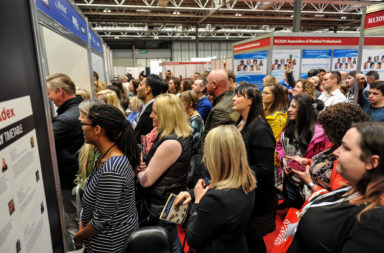The UK Civil Aviation Authority (CAA) has recently published a new report, highlighting the progress made by UK airports to help passengers whose disabilities are hidden, such as autism, dementia and hearing loss and many other conditions that are not immediately obvious.
This follows the CAA issuing new guidance for airports in December 2016 on how to improve the assistance they offer.
Today’s update highlights the advances made and identifies areas where further work is needed. This comes against a background of record numbers of people with all types of disability flying.
Developing services include:
- Giving passengers the option to wear a lanyard or wristband (or other discreet identifier) to help make staff aware that they might need extra help at the security search area or elsewhere in the airport
- Providing enhanced disability awareness training packages for key customer-facing staff, including those at security search areas, as well as those who provide direct assistance to disabled people
- Introducing family or assistance security lanes, which passengers with hidden disabilities can use, which provide a less stressful and rushed experience
- Publishing a wide range of accessible information for people with hidden disabilities, including pictorial guides, videos and other online guides on what to expect at the airport, especially at the security search stage
- Consulting with disability organisations, including those representing people with hidden disabilities, on how the design of the assistance service can best meet the needs of this group. and how it can best meet the needs of this group of passengers
However, further work needs to be done to ensure all UK airports continue to provide consistent and high-quality assistance services to disabled people, including people with hidden disabilities, in line with our guidance.
The CAA will continue to work with airports so that the enhancements and improvements that airports have made are genuinely helping people with hidden disabilities access air travel, as well as working with airports and disability groups to broaden airports’ focus in terms of the types of hidden disabilities that their assistance services caters for.
Matt Buffey, Head of Consumer Protection at the UK Civil Aviation Authority, said: “Today’s report highlights the significant achievements that airports have made in supporting disabled passengers, particularly those with hidden disabilities.
“Record numbers of passengers with disabilities are travelling through UK airports, and so its hugely important that the assistance meets their particular needs.
“We know that people with hidden disabilities can find airports difficult and stressful places, in particular the security search, and we are pleased to see how well airports have responded in improving the assistance they offer and tailoring to the needs of people with hidden disabilities.
“The UK Civil Aviation Authority is committed to being a champion for consumers with disabilities and we will continue to work with the aviation industry to further enhance the facilities they provide.”
Commenting on the report, Aviation Minister, Baroness Sugg, said:
“Travelling by air can be a daunting experience for those with hidden disabilities.
“Whilst there is still more to do, we should recognise the real progress that has been made by airports since the CAA introduced requirements for specific assistance services for people with non-visible disabilities.
“Through the government’s Aviation Strategy we will continue to work with the CAA and industry to improve the flying experience for all passengers.”
ABLE Magazine’s travel section is sponsored by Post Office Travel Insurance




